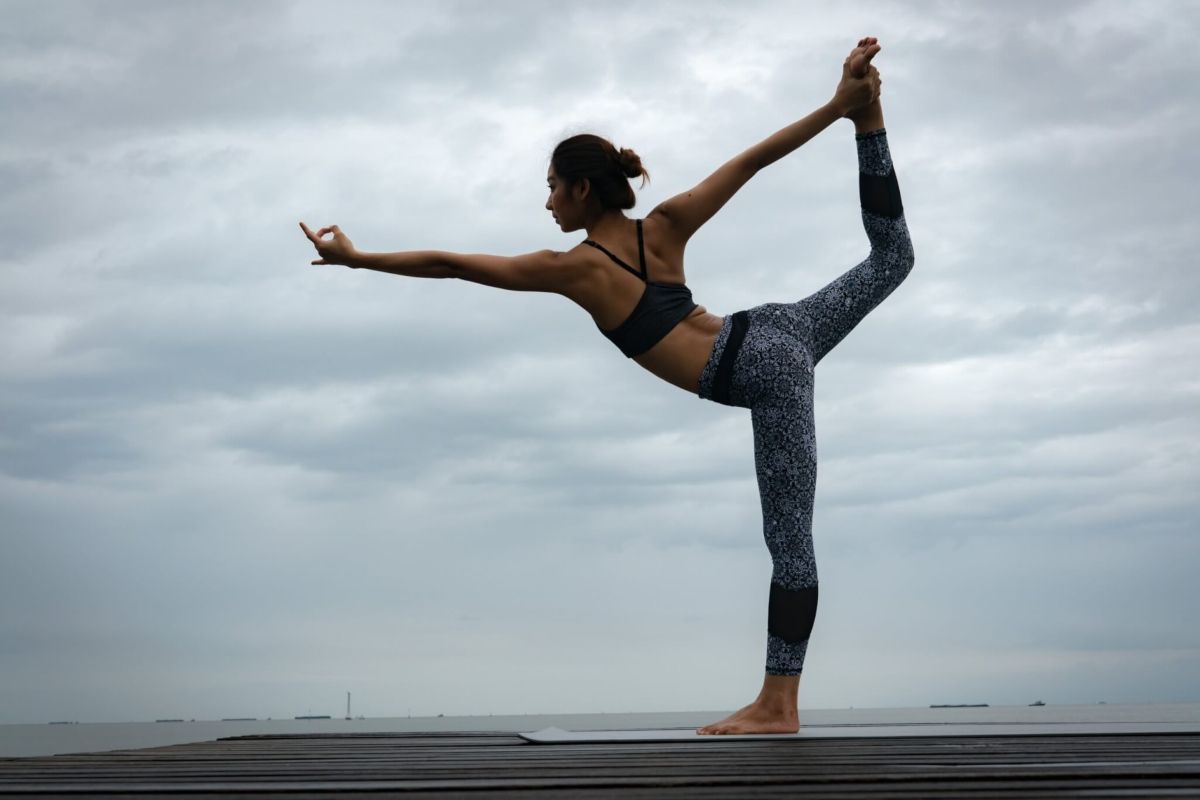One in every 10 women in India has polycystic ovary syndrome (PCOS), a common endocrinal system disorder among women of reproductive age. According to a study conducted by the department of endocrinology and metabolism, AIIMS, about 20 to 25 per cent of Indian women of childbearing age are suffering from PCOS. While 60 per cent of women with PCOS are obese, 35-50 per cent have a fatty liver. About 70 per cent have insulin resistance, 60-70 per cent have high level of androgen and 40-60 per cent have glucose intolerance.
This common female endocrine disorder causes your ovaries to produce an excess of male hormones (testosterones), which results in irregular periods, weight gain, and later problems with fertility and ovulation.
However, consistent research has shown that doing yoga regularly can ease symptoms of PCOS, thus aiding in a healthy lifestyle.
Here Are 5 Easy Yoga Poses to Relieve Symptoms of PCOS
- Bridge Pose (Setu Bandhasana)
Bridge Pose yoga can calm the brain and reduce stress and anxiety while relieving tension in the back muscles, according to the healthline.
Here’s how to do it. Start by lying on your back with your knees folded and feet hip-distance apart on the floor.
Place your hands, palm down beside your body. Then inhale while slowly lifting your lower back, mid-back, then upper back off the floor (while the pelvis lifts up, lengthen from pelvis to sternum). Gently roll the shoulders and bring the chest toward the chin. Keep thighs parallel to each other and the floor with all four corners of the feet pressed firmly into the ground. Breathe with ease and stay in this pose for 1–2 minutes.
Repeat up to 5 times.
- Bow Pose (Dhanurasana)
Dhanurasana may help relieve menstrual discomfort, stimulate reproductive organs, and regulate menstrual flow, according to Monisha Bhanote, MD, FASCP, FCAP, triple board-certified physician, and Yoga Medicine instructor. “It increases circulation to the pelvic region, releases tension from abdominal organs, and also stretches the neck, shoulders, and legs muscles,” she says.
Here’s how to do it. Start lying down on your stomach with your arms on the side of your body. Fold your knees up and reach your hands to hold your ankles. Breathe in and lift your chest up off the ground while pulling your legs up. Hold the pose for 15 seconds, and remember to keep breathing. To release, bring your chest and legs back toward the ground, release the hold on your ankles, and relax, face down. Repeat for a total of 3 times.
- Garland Pose (Malasana)
Malasana can strengthen the pelvic floor and abdominal core while opening the hips.
How to do it: Start with feet about a mat’s width apart.Bend your knees and lower your buttocks toward the floor to come into a squat position. Bring your hands in prayer position (anjali mudra). You can allow your thumbs to touch your sternum to help keep the chest lifted. Press your upper arms/triceps inside of your knees and stay engaged with spine straight (elbows press into knees to open the hips). Extend the low back and draw shoulder blades toward one another. Remain in this position for up to 5 breaths. Come out of it by straightening your legs.
- Cat-Cow Pose (Chakravakasana)
Here’s how to do it. Get in tabletop position with your palms down, wrists and elbows aligned under shoulders, knees under hips, ankles straight back from the knees. You can curl the toes under or tops of the feet down, as the flow moves you. Inhale, bend the elbows, lower the belly, lift the chin and the tail bone simultaneously, moving each of the vertebrae of the spinal column in a wave.
Reverse the movement on the exhale by tucking the tail bone and chin, and doming the back as you draw the navel toward the spine as the chin tips toward the chest.
- Butterfly Pose (Supta Baddhakonasana)
Begin seated on the mat with legs extended in front of you. Bend your knees and bring your heels toward you to press the soles together. Your knees will drop to the sides. Lean backward until your back is on the floor. Arms will be supported and open, palms up. Close your eyes, breathe deeply for 3–5 minutes, or longer if you are comfortable. Be sure to come out of the pose mindfully, by rolling to your right side and pausing there for several breaths and then up to seated, or in any way that works best for you.
